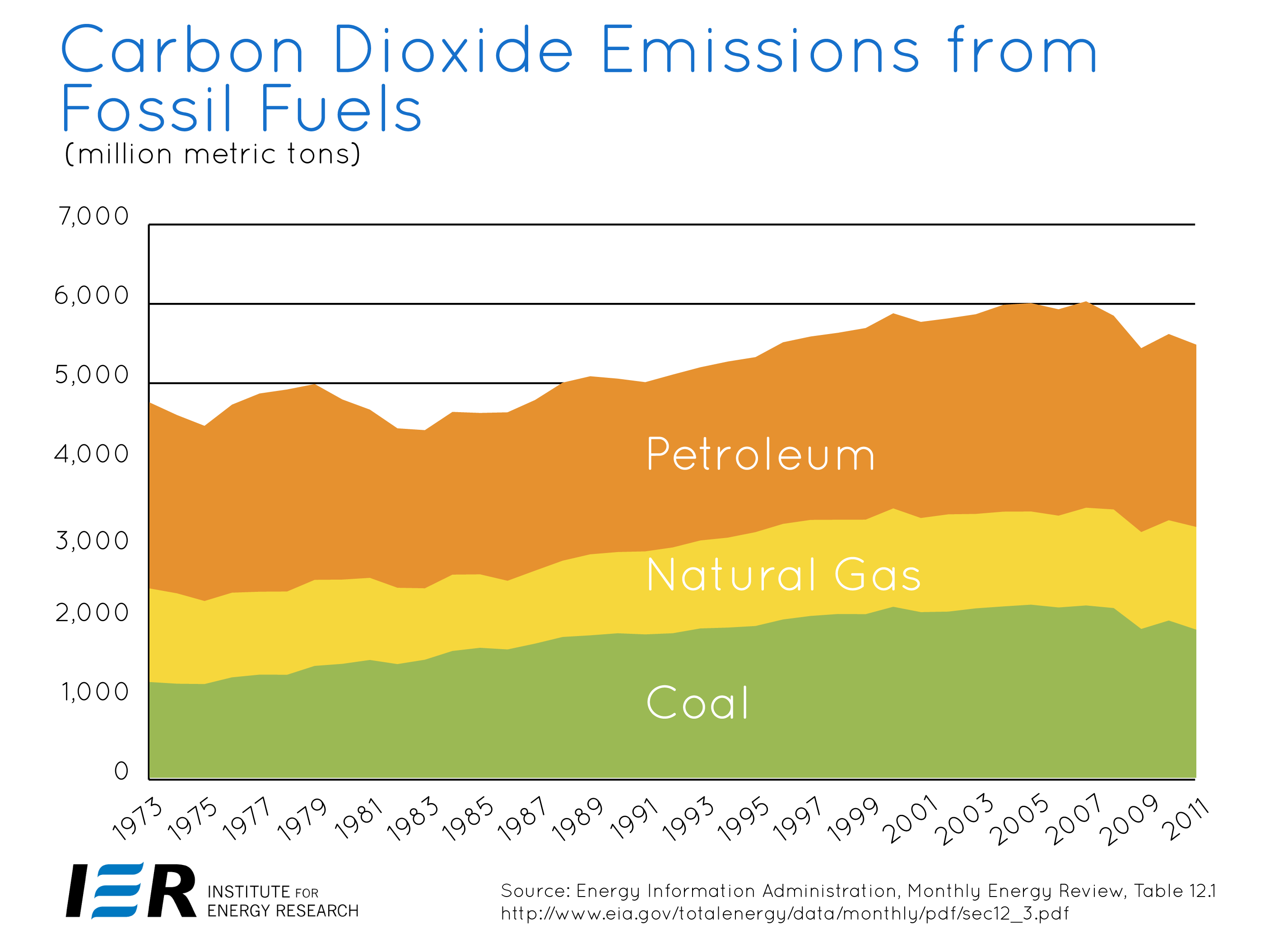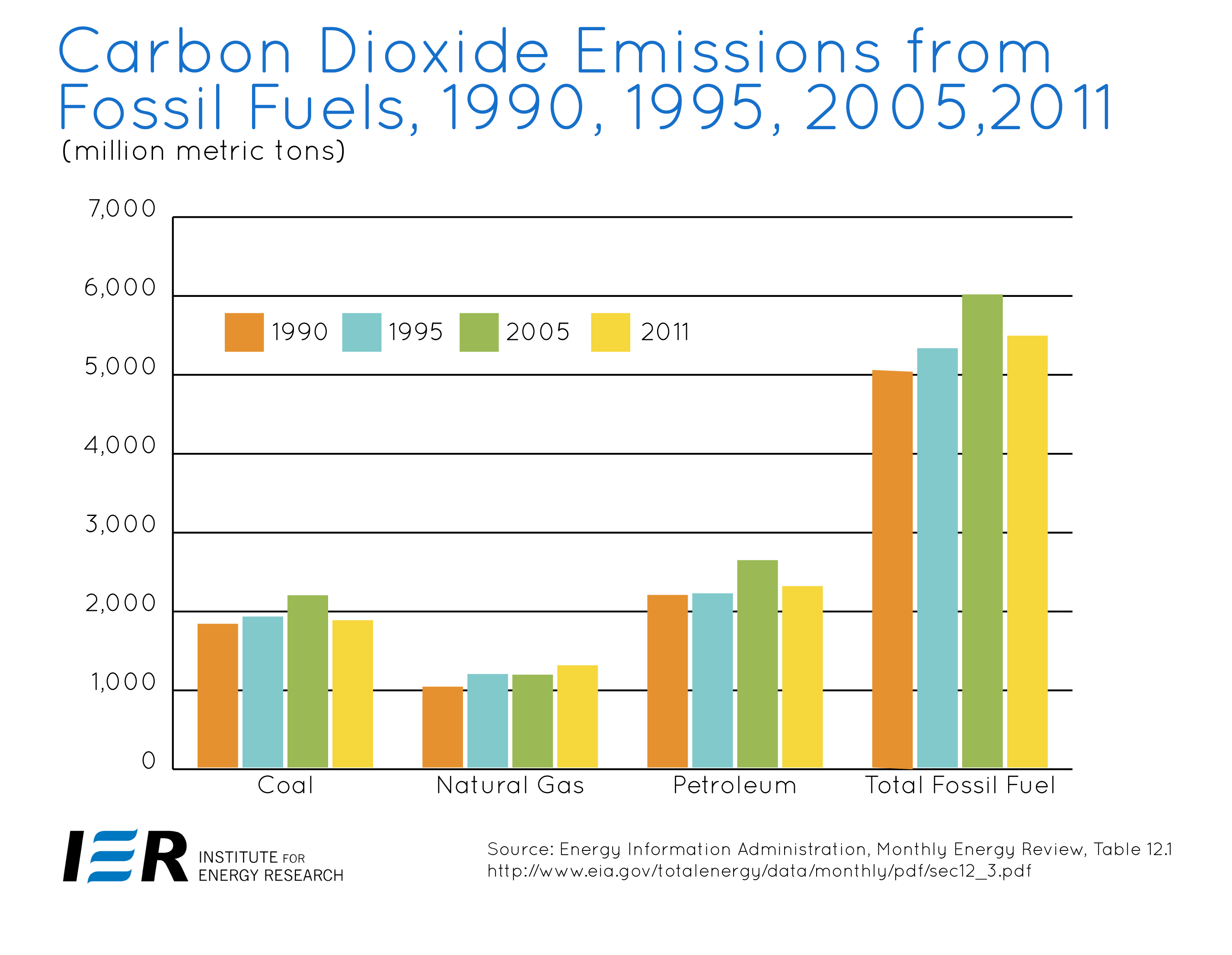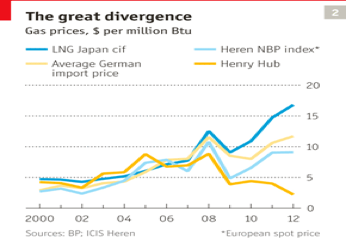The Energy information Administration reports that energy-related carbon dioxide emissions in the United States are 2.4 percent less in 2011 than they were in 2010, and 9.1 percent less than in 2007 when they hit their peak level. Why are carbon dioxide emissions on a downward trend? For several reasons:
- The sluggish economy has reduced the demand for energy
- High oil prices are reducing the demand for gasoline and other motor fuels
- Low natural gas prices and EPA regulations are resulting in a switch from coal to natural gas in the electric generation sector (carbon dioxide emissions from natural gas are about half those of coal)
- And, to a lesser extent, increased consumption of renewable energy has decreased fossil fuel consumption
The U.S. economy grew by only 1.7 percent in 2011, which contributed to the decline in energy usage of 0.5 percent. Energy intensity (energy consumption per dollar of gross domestic product) also declined—by 2.1 percent in 2011, indicating that we are using less energy to fuel our economy.
Emissions by Fuel Type
In 2011, total carbon dioxide emissions from fossil fuels were 5,472 million metric tons, of which 34 percent was from coal, 24 percent from natural gas, and 42 percent from petroleum. Carbon dioxide emissions from petroleum declined by 2.1 percent in 2011 as a poor economy, high oil prices, and increased use of biofuels resulted in a drop in petroleum consumption of 1.8 percent.
Carbon dioxide emissions from coal also declined, but at a higher rate than petroleum—5.8 percent— as low natural gas prices and EPA regulations have both electric generators and industrial producers switching to natural gas as their fuel of choice. Lower natural gas prices are a result of hydraulic fracturing technology that allows shale gas to be produced very economically in abundant quantities.[i] As a result, carbon dioxide emissions from natural gas increased by 2.4 percent. Since 2006, carbon dioxide emissions from natural gas have increased by almost 12 percent.
But, because the carbon dioxide content of natural gas is about half that of coal, fuel switching from coal to natural gas for electric generation has resulted in lower carbon dioxide emissions from that sector. So, even though the demand for electricity was up in 2011 by 1.2 percent, carbon dioxide emissions from the electric generation sector were down by 4.6 percent. That trend in continuing into 2012 as coal’s share of generation continues to decline.
Some expect that carbon dioxide emissions will fall back to 1990 levels in 2012. According to the Energy Information Administration, energy-related carbon emissions fell by 7.8 percent during the first quarter of 2012; they are 8.5 percent lower than they were in the first quarter of 2010.
Besides increased natural gas usage in the electricity sector, increases in generation from renewable energy sources also helped to lower emissions in 2011. Renewable generation was 21.7 percent higher in 2011 than in 2010, led by hydroelectric power, whose generation levels increased almost 25 percent due to good precipitation and water run-off. Wind was second in increased generation levels, up by 26.5 percent, contributing 25 billion kilowatt hours more electricity compared to hydroelectric power’s increase of almost 65 billion kilowatt hours.
Europe vs. the U.S. Regarding Carbon Mitigation
Coal consumption in Europe grew by 3.3 percent in 2011 due to a glut of European Trading Scheme (ETS) emission allowances that made coal the most profitable electric power fuel. In contrast to the increased use of natural gas for generation in the United States, Europe’s use of natural gas fell by 2.1 percent in 2011 as gas-fired plants became increasingly uncompetitive. Because natural gas emits half the carbon dioxide of coal, its consumers need only half the number of carbon permits as coal. Due to the glut, carbon allowance prices in Europe dropped to 8 euros a tonne—a decline of 17 percent. Natural gas prices are high in Europe because of the EU’s dependence on natural gas from Russia and liquefied natural gas supplies outside of Europe. Natural gas has become so expensive there that the major generators are considering shutting down their gas-fired plants by 2015, making coal the only viable alternative.[ii]
Source: The Economist, http://www.economist.com/node/21558433
Why isn’t Europe developing its own shale gas resources and emulating the U.S. success of inexpensive natural gas production? For instance, according to the Energy Information Administration, France has 180 trillion cubic feet of shale gas resources.[iii] In the EU’s wisdom of meeting their carbon goal for 2020, they have banned hydraulic fracturing in favor of the green lobbies’ wishes. Europe’s socialism that imposed cap-and-trade restrictions making its industries less globally competitive is now experiencing a coal boom. On the other hand, American capitalism has achieved technological innovation in hydraulic fracturing, lowered energy prices for natural gas, reduced dependence on foreign energy imports, and raised the prospect of energy independence in the future.
But all is not good here either regarding policies and regulations. While Europe’s policies have resulted in a coal boom, EPA regulations in the United States are continuing to move the United States further away from coal-fired generation. In April 2012, coal and natural gas each provided about 32 percent of the electricity generated in the United States. That’s a far cry from coal’s generation levels of about 50 percent only a few years ago. The regulations promulgated by EPA are expected to retire about 60 gigawatts of coal-fired plants, with others being converted to natural gas or retrofitted with additional environmental equipment, increasing their cost of generating electricity. If natural gas prices escalate as they have done historically, the United States will not have Europe’s option of generating electricity from coal if our coal fleet is being retired or converted to natural gas.
Conclusion
U.S. levels of carbon dioxide emissions are currently plummeting as inexpensive natural gas is replacing coal for electric generation and EPA policies regarding increased regulation of coal-fired power plants are making the dynamics of electric generation opposite those of Europe, who are again relying on coal to fuel their electric generators. While lower carbon dioxide emissions may please some, making our fleet of electric generators less diverse can result in future problems such as high electric prices or even inadequate supplies of electricity.
[i] Plunge in CO2 Output due to Natural Gas Fracking, July 17, 2012, http://news.investors.com/article/618435/201207171745/steep-drop-in-co2-is-due-to-industry-shift-to-natural-gas.htm?src=IBDDAE
[ii] Energy Tribune, Irony of Ironies: Europe Switches to Coal as U.S. Gas Glut Reduces Emissions, July 12, 2012, http://www.energytribune.com/articles.cfm/11160/Irony-of-Ironies-Europe-Switches-to-Coal-as-US-Gas-Glut-Reduces-Emissions
[iii] Energy Information Administration, World Shale Gas Resources: An Initial Assessment of 14 Regions Outside of the United States, April 2011, http://www.eia.gov/analysis/studies/worldshalegas/






